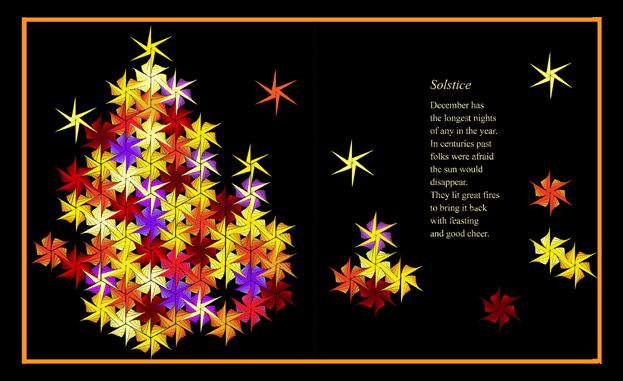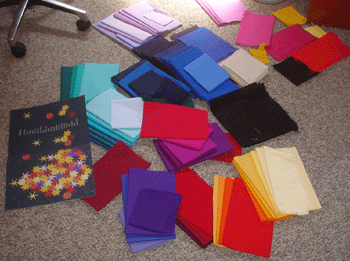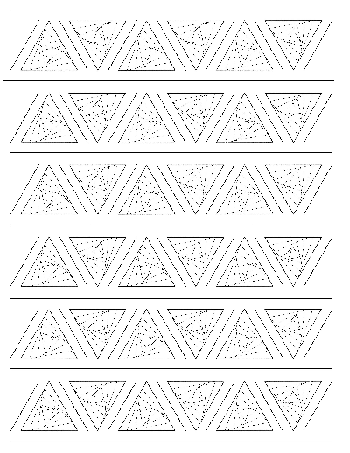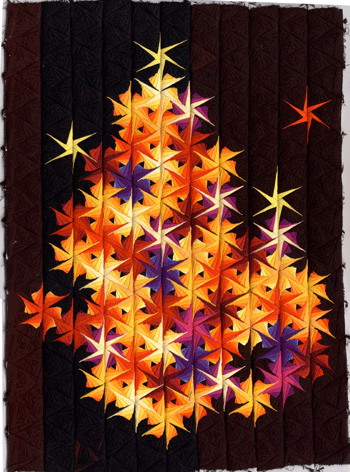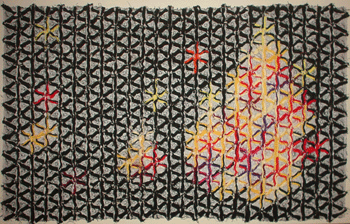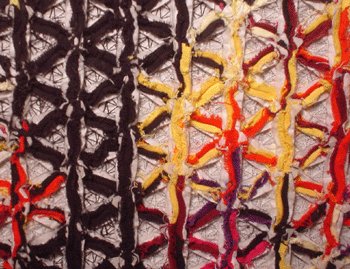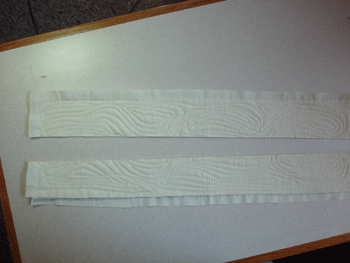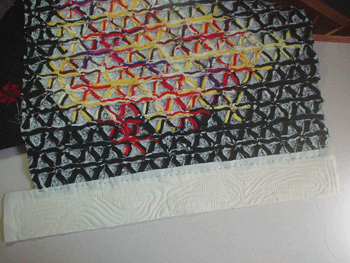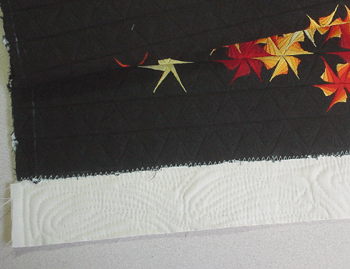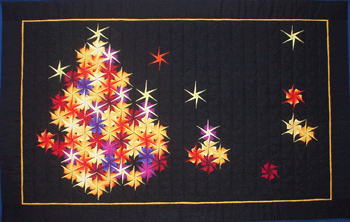| Creating the Solstice Quilt For this quilt and others involving flames I was intrigued by the twisted log cabin patterns. The shapes and movement suggest dancing and flickering flames, particularly when done in bright colors on a black background. I bought Barbara Kaempfer's book, LOG CABIN WITH A TWIST, published by American Quilter's Society, and studied the quilts and techniques used to create them. Three quilts in the book that particularly appealed to me when considering my flame quilts are "Windmills" and "Waves", both made by Käthy Gubler, of Switzerland, and "Feuer" (Fire) by Esther Kronenberg, also from Switzerland. People often remarked at the small size of the quilts I had done for PIECES, but after seeing the work of George Siciliano at the Lancaster quilt show I knew it was possible to work much smaller! I wanted to be able to work that small to get as much detail and movement as possible in my quilts for WINTER LIGHTS. I spoke with George, who often wins top prizes for his miniatures, and he told me he first designs on the computer, then begins to sew. I decided I needed to learn to make better use of my computer. |
All images and text © Anna Grossnickle Hines 2005

| I chose to use the twisted triangle to create my solstice. I drew my triangle in PhotoShop then copied and turned it, putting six together to make a hexagon. I copied the hexagon over and over, and joined them together to make a full page. The sheet shown above is two columns less than half the complete quilt. The quilt is 26 columns of 25 triangles each. As you can see, in each column one triangle is cut in half to make the outside edge even.
Once I had this grid I used the "fill" tool in PhotoShop to put color in the spaces. While I worked I kept a white background behind my line layer so I could see the spaces to "fill". To check how I was doing I would "hide" this white layer and look at the colored spaces against a black background. Of course, I often wanted to make changes and try other possibilities. I found I could do this by making a new copy of my single hexagon without any color, fill it with whatever colors I wanted then "drag" it into my design and put it wherever I wanted. I could do this dozens of times and end up with dozens of layers which I could then move around, and "hide" or show with a simple mouse click, trying different combinations forever! |

Below is my final choice with the white "working" background on the right half and the black background on the left.

